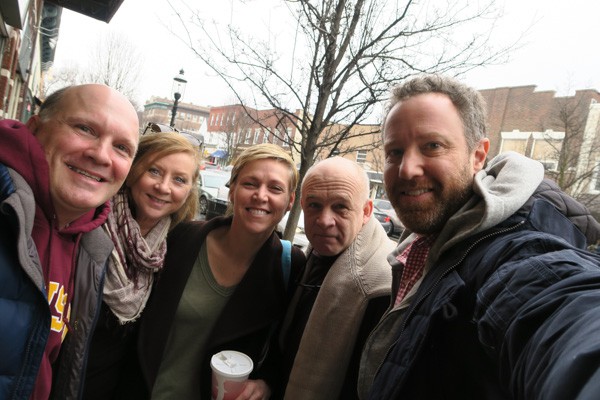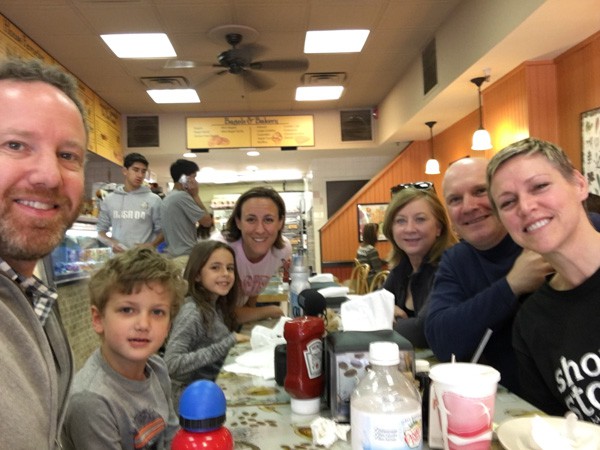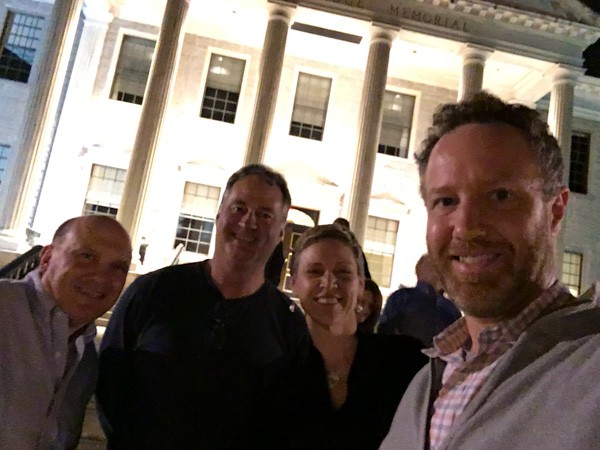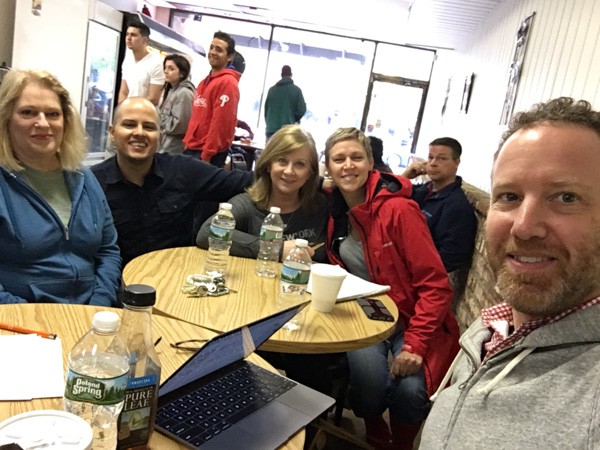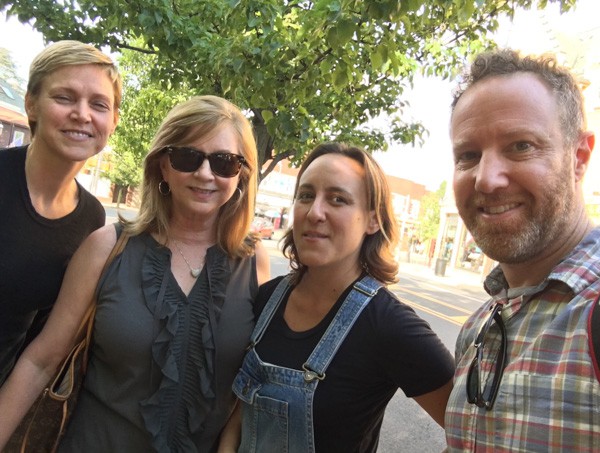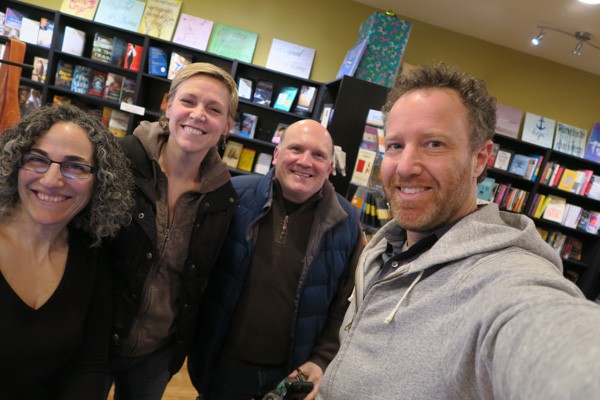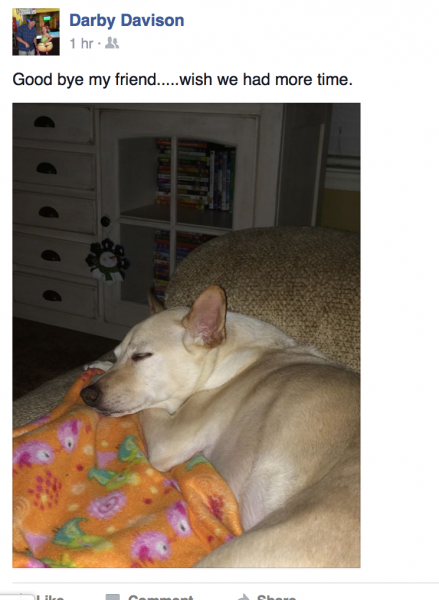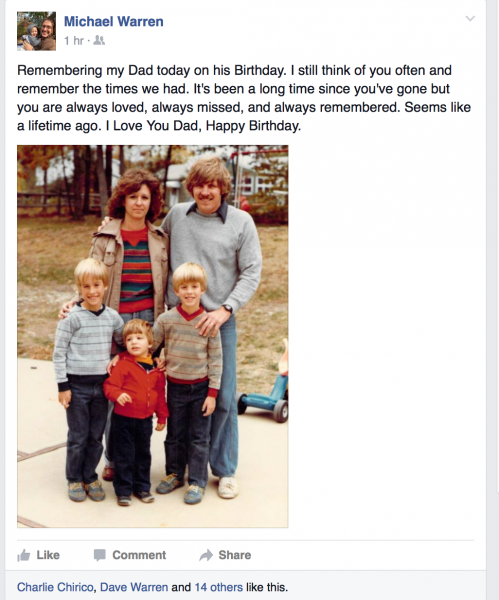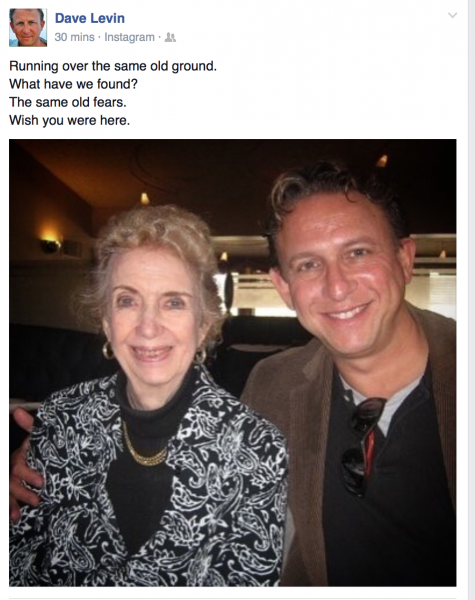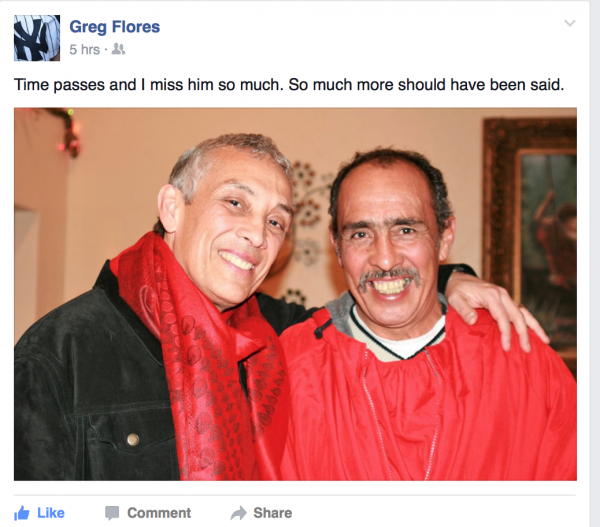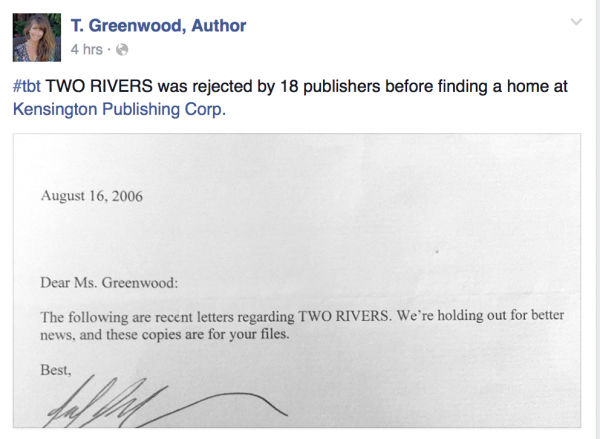Most of us are passionate about creating our work, but we find marketing it to be a challenge. The skills that allow us to create a great story are different from those we need to to position it in the marketplace, promote it, and actually get someone to buy it.
When I work with clients, I often focus a lot on honing their messaging, and more deeply understanding the psychological triggers that will get their audience to take action.
Today I want to share a little case study in what effective sales copy looks like. I want to take you, line by line, through an email that Michael Hyatt sent out to promote an online membership site that he runs.
If you have ever tried to get someone to buy your book, or sent out a newsletter hoping to encourage readers to leave a review, or posted to Facebook to get attention, then you should keep reading.
Before we begin, I want to mention two books. Much of what Michael is doing in his sales copy below is an illustration of marketing techniques outlined in these books:
- Influence: The Psychology of Persuasion, by Robert B. Cialdini
- Start with Why: How Great Leaders Inspire Everyone to Take Action, by Simon Sinek
If you haven’t read these books, and have any interest in marketing, go buy them now.
In Influence, Robert Cialdini outlines six psychological triggers that marketers use to get people to buy:
- Reciprocation
- Commitment & Consistency
- Social Proof
- Liking
- Authority
- Scarcity
In Start With Why, Simon Sinek makes the point that too many people try to sell their ideas and their work in a completely backwards fashion. Usually they start by telling you what you will receive, when instead you should follow this order:
- Why (you do this work; the deeper reason)
- How (you accomplish this)
- What (you offer)
Okay, let’s dig in to the case study with Michael Hyatt. Background: he runs an online program called Platform University. I’m on his email list, and twice per year, I receive a bunch of emails when he is promoting it. Below is one of those emails. Note: I’m not promoting Platform University, I am not an affiliate, and he just closed the doors to it anyway. I am simply using this sales letter as an example of the psychological triggers embedded in marketing and sales copy.
I use Michael as an example here because he is an incredible marketer. He has a huge following, a wonderful reputation, and offers a wide range of ways for people to learn from his work. Many look to him as a model of success. I use Michael as an example out of RESPECT for what he has achieved; and to identify what we can learn from him.
Below, the text in blue is a line from Michael’s email. The text in red is my commentary and analysis on each line:
SUBJECT LINE OF HIS EMAIL: Where my blog falls short.
In my inbox, this grabbed my attention. As I mentioned, I really respect Michael, so seeing this subject line feels like he is confiding in me. That even Michael struggles with things. Keep in mind, this is an email promoting an online membership site, yet his subject line was framed as a personal confession.
Dan,
This is a basic part of email marketing software, but this makes the entire piece feel more personal. He is connecting the personal nature of the subject line to me personally.
This might sound strange, but hear me out.
He’s making me curious. Not just the promise of “something strange,” but his plea to “hear him out.” He is literally saying “keep reading.” This is what every marketer wants… to get you to keep reading their sales pitch.
You’re not reading my best content.
This is the confession. He is confiding in me. It goes right back to the subject line of the piece: “Where my blog falls short.” Worth noting: these two sentences actually don’t connect that well, because his blog doesn’t fall short, he is simply saying there is more helpful advice in Platform University.
Don’t get me wrong. I am proud of what I publish on my blog. This community inspires me every day.
But I’m just scratching the surface!
To me, this is where I begin to feel marketed to. It begins as if he is confessing something to me. This is the turn, when I begin to realize that the confession as a setup for this payoff — for him to say “I’m proud of my blog,” and indicate there is more he could sell me.
There’s a level of insight and access I reserve for anyone who is ready to take their influence to a new dimension.
There is a huge word here: “reserve.” He reserves something for certain people. You see this word in alcohol marketing: the “reserve” bottles are the rarest and most highly sought after. That is preceded by the term “access.” You can imagine this already… you are at a fancy restaurant, but off to the corner is a velvet rope and curtain that they “reserve” for those who are special… that “access” is off limits to you. It is intended to create a curiosity and desire to get access.
It’s called Platform University.
Here he lays down his hand, including linking the name.
I founded this online membership in 2013 for anyone with something to say or sell.
To me, this is the weakest line in the whole piece. What is an “online membership”? It seems to be missing the word “website” or “community.” He also describes this really broadly: it is for “anyone with something to say or sell.” Gone are the caveats of those who are special. It is for anyone who has anything to say, and anyone with anything to sell. That seems like a low bar for entry. To me, this line doesn’t belong in the email.
Every week, thousands of leaders — authors, bloggers, entrepreneurs, ministers, and more — learn specific strategies for growing their influence online and offline.
Okay, now we are back on track; using the term “leaders” is genius. It actually goes against the preceding line… and identifies that this program is for a leader, challenging you to consider “Don’t I want to be a leader?”
There is so much packed in this sentence, and it ends with the pitch; he described it as:
- learn specific strategies
- growing their influence
For a few days, you have the opportunity to join us!
He is using the idea of scarcity here — that I have to act now, or I will lose out. The program is only accessible for a few days. It is an “opportunity” for me, not just one of 1,000 services I could buy. And the line ends not with a focus on the products that you get, but the access you get… “join us.” For those on Michael’s email list, they likely have a deep respect for him. That is part of what he is selling. Not just to join “him,” which would be enough. But to join “us.” The “us” indicates that right now, you the reader are an outsider. To become an insider, you have a few days to join.
That’s because Spring Enrollment is open from NOW until Wednesday, April 27th.
Worth noting here is that I received the email from him on April 19th, and he is saying enrollment ends on April 27th. I can see now that in the line above, the “for a few days” line meant to indicate scarcity was not fully accurate. Again, just a subtle way to encourage people to take action immediately.
I only open this public enrollment twice a year. After that, the doors will shut until the fall. That’s a lot of time to lose.
The huge line here though is this: “That’s a lot of time to lose.” He wants you to feel a loss if you don’t take advantage of this offer. That, by passing, you are losing a lot of time. It also reframes the calculation people are doing in their head. Instead of trying to justify “Can I afford to spend $30 per month on this program?” it reframes it as “Can I afford to lose 6 months?”
Are you ready to amplify your influence online?
This is a personal challenge. It is not phrased as him trying to prove to you that his program delivers, he is challenging you — are you ready. It positions the goal — “amplify your influence” as something completely attainable.
This also goes to the classic sales strategy: that if you get a potential customer to say “yes” to anything, that increases the chances they will say “yes” to your sales pitch. This is why in a sales situation such as buying a car, you are offered free coffee; why they ask you if you would like to sit down, instead of just saying “let’s sit down.” You saying “yes” to the question somehow seeds the behavior of saying “yes” to this other person, making it more likely you will say “yes” when asked “so, would you like to buy this car?”
Michael wants you to say “yes” in your head when he asks if you are ready.
You can do it.
This is the heavy part of the sales pitch. I am just a name on an email list, and he is now validating my abilities, following the line of asking if I am ready. Then he doubles down…
With the teaching and support of our amazing community, you will make faster progress growing your blog, business, product, or ministry — I guarantee it.
He promises that I will make faster progress, and then he guarantees it. Now, I checked the Platform University website, and I couldn’t find any reference to a guarantee. Or refund policy. It’s not an expensive program or anything, but I did wonder how he backs up this message of guaranteeing not that I will be satisfied or my money back, but he guarantees that I will make faster progress with my business. That is a huge guarantee. How do we measure that? What is the penalty if his guarantee doesn’t come to fruition?
For a little more than $1/day, this will become one of the best investments you can make to ensure the message you have to share with the world doesn’t get lost.
This is a technique I have seen Michael use elsewhere, breaking down the commitment to something really small. He does it on the sales page for Platform University in a similar fashion: “You can engage with each week’s content in about 45 minutes—that’s less than half of 1% of your week.”
Here he also hits a raw nerve of what we fear, that our message will get lost.
Dust off that old blog of yours…
Get serious about that killer online business idea…
Grow the following that will help you pursue your passion full time…
Here he is asking us to dream of what is possible. To remind us of ideas we have had that we have shelved due to being busy in life.
What’s possible for you? I can’t wait to find out. Join me inside Platform University, and I’ll see you on the inside!
Warmly, Michael Hyatt
This is another big sales line, “What’s possible for you.” He wants you to envision that for a moment, because it means that if you don’t sign up for his program, you have to go through the emotions of shutting the door on what is possible.
He then aligns this to the respect or liking you have for him by making this personal; he can’t want to find out, and he personally wants to see you on the inside. He practically puts on his Mister Rogers sweater in the closing, with the word “warmly.” The previous 268 words were a strong sales pitch for a product, yet he ends with “warmly.” He doesn’t want you to feel he is selling to you, rather that he has reached out to you personally and inviting you in to something special.
P.S. I have a special “fast action” bonus for anyone who joins today or tomorrow. It’s a game-changer for your productivity. Get more details here.
You didn’t think he was done, did you? Here he digs back into the tactic of scarcity by offering a fast action bonus which goes away in two days.
P.P.S. Consider this: if you’ve made progress by reading my free blog posts, imagine the impact and growth you can have when you tap into my private membership. It’s a lot more affordable than you’re expecting: http://platformuniversity.com/join
One final statement from him: again he asks you to imagine what is possible. He also uses the concept of commitment & consistency by referencing his blog. That he has been there for you providing great free content. And hinting that perhaps this is your chance to reciprocate. Then he uses that word “private” again, going back to the opening pitch with the idea that there is even better stuff just out of your reach.
There is a lot going on in that email, right?! I mentioned Simon Sinek’s book Start With Why at the start of this post, and I want to make this point: notice how Michael really didn’t tell you WHAT you receive when you sign up for Platform University. He focuses mostly on the “WHY.” Why he created this, and why you should care. The “How” and the “What” come when you click one of the links over to the sales page.
There are many elements of Robert Cialdini’s book Influence in here as well. The psychological triggers of Liking, Reciprocation, Scarcity and others.
This is where the sophistication of Michael’s marketing comes in. To patiently understand how to take people through a sales funnel. To not do what so many others do: start with “what” and just overwhelm the reader with what they receive. Instead, Michael focuses first on the subtle psychological triggers of imagining what is possible, and of not wanting to miss out.
If you are someone who wants to get better at marketing and selling your work, become a keen observer of how you are sold to.
Do you have your own examples of people that you feel do marketing really well? Please share!
Thanks.
-Dan
